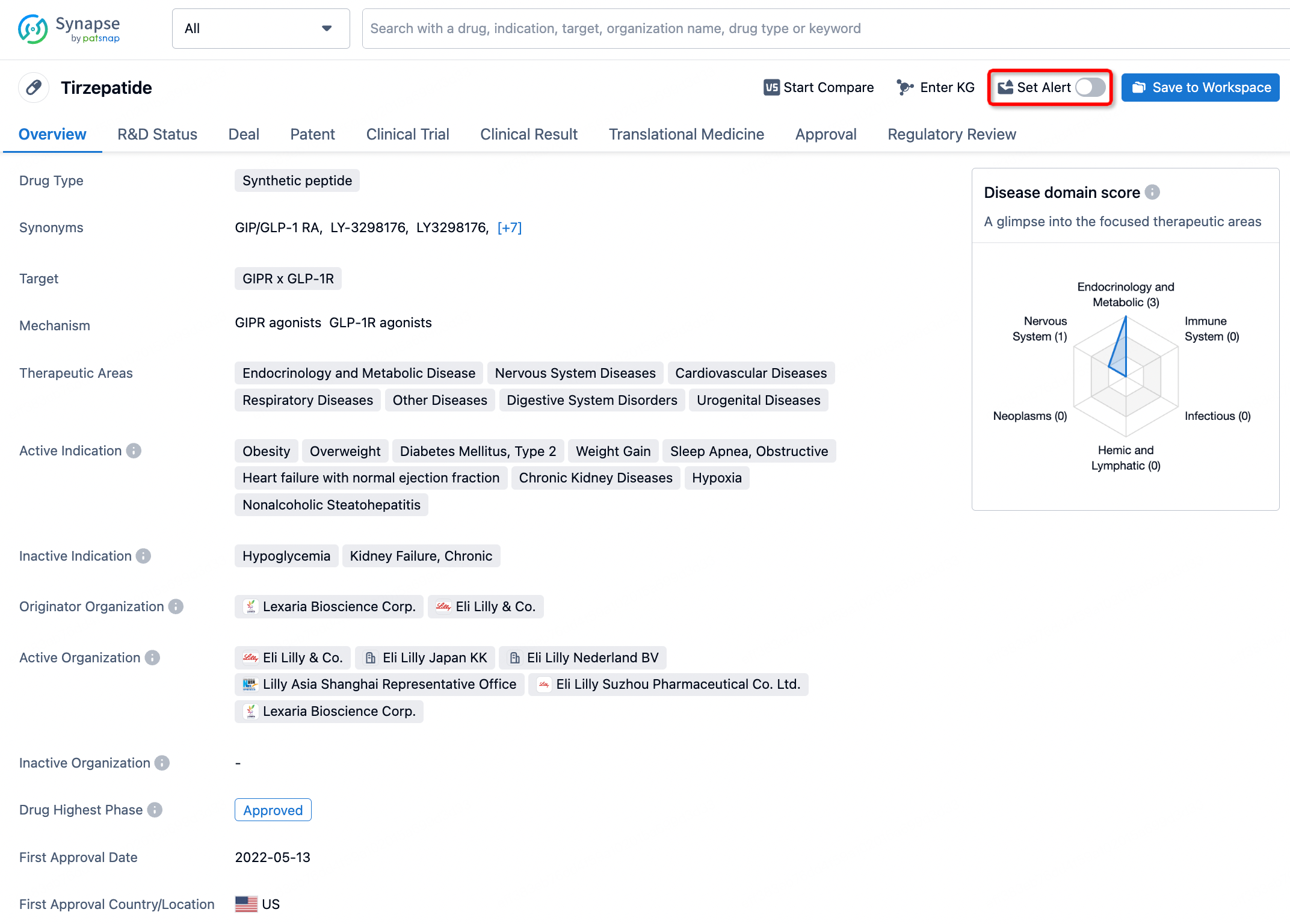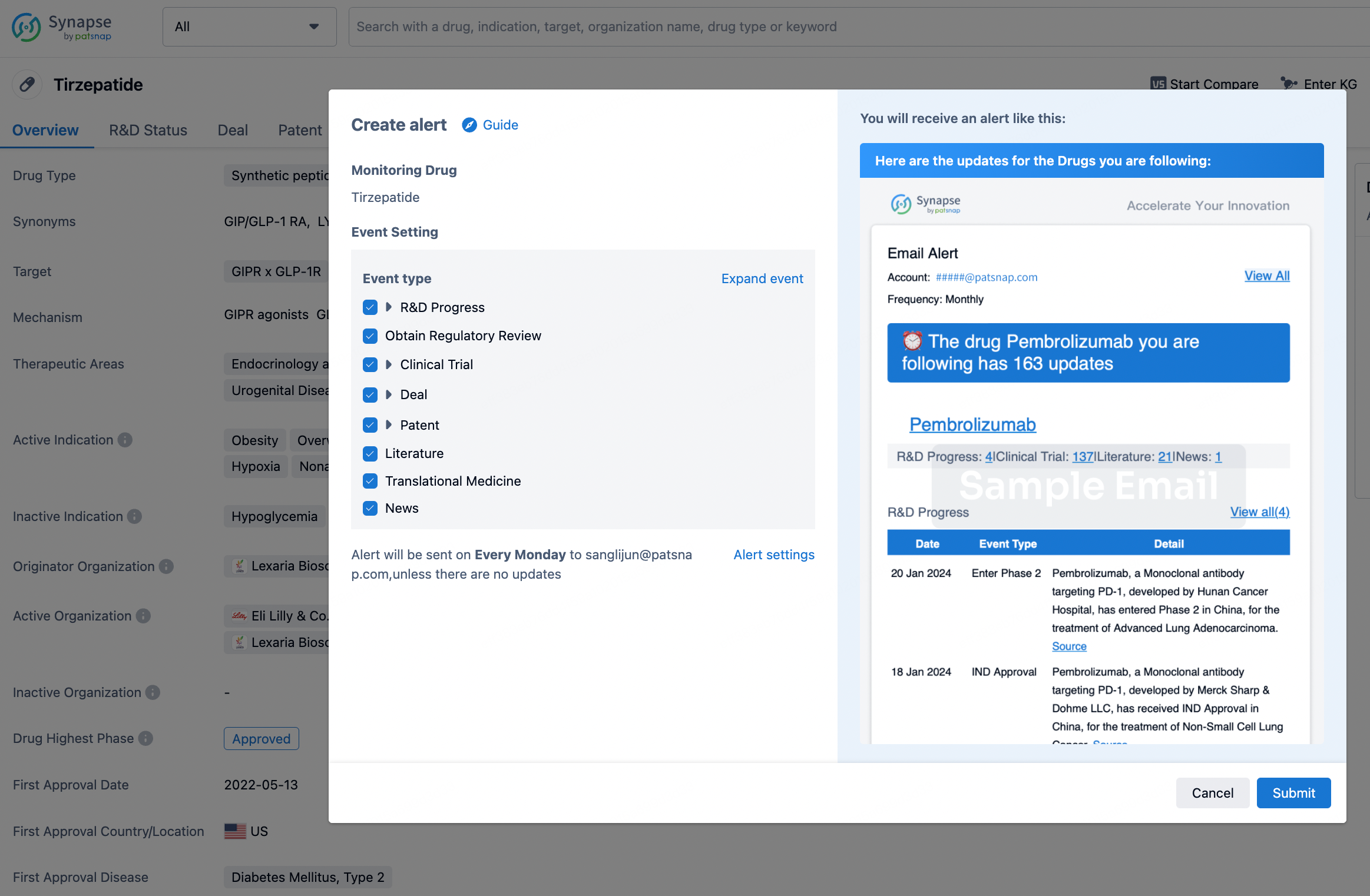Request Demo
What is the mechanism of Ferrous lactate trihydrate?
18 July 2024
Ferrous lactate trihydrate, often referred to simply as ferrous lactate, is a compound that serves as an important source of iron in various applications, particularly in the food and pharmaceutical industries. Understanding the mechanism of ferrous lactate trihydrate involves delving into its chemical structure, how it releases iron, and the physiological implications of its use.
Chemically, ferrous lactate trihydrate is an iron (II) salt of lactic acid. The "ferrous" part of its name indicates that the iron present is in its +2 oxidation state, which is more soluble and bioavailable compared to the ferric (iron +3) state. The "trihydrate" indicates that the compound is associated with three molecules of water. This hydration state facilitates its stability and solubility.
Upon ingestion, ferrous lactate dissolves in the digestive tract. The lactic acid component acts as a chelating agent, which helps to keep the iron in a soluble form, enhancing its absorption in the intestines. This is crucial because iron absorption is a heavily regulated process in the human body. Iron must be in a soluble form to be absorbed efficiently by the enterocytes, the cells lining the gut.
Once ferrous lactate enters the acidic environment of the stomach, it dissociates into iron ions (Fe2+) and lactate ions. The iron ions can then be absorbed in the duodenum and the proximal jejunum, the initial sections of the small intestine. Transport proteins such as divalent metal transporter 1 (DMT1) facilitate the uptake of these iron ions into the enterocytes.
After absorption, the iron ions are either stored in the form of ferritin within the enterocytes or transported into the bloodstream. The latter requires binding to a protein called transferrin, which safely carries the iron through the blood to various tissues, including the bone marrow for the synthesis of hemoglobin, and to other cells for the production of enzymes and other iron-dependent molecules.
The lactate component of ferrous lactate is metabolized separately. Lactic acid is a naturally occurring organic acid in the body and is readily converted to pyruvate, which enters the Krebs cycle for energy production.
The use of ferrous lactate trihydrate is favored for several reasons. Its high solubility and bioavailability make it an efficient source of iron for combating iron deficiency anemia. Moreover, because it is less likely to cause gastrointestinal upset compared to some other iron supplements, it is often preferred in formulations intended for sensitive populations such as children and pregnant women.
In summary, the mechanism of ferrous lactate trihydrate involves its dissolution in the digestive tract, facilitated absorption of iron ions, and subsequent transport and utilization of iron within the body. This compound effectively combines the benefits of high bioavailability with a lower risk of side effects, making it a valuable choice for iron supplementation.
Chemically, ferrous lactate trihydrate is an iron (II) salt of lactic acid. The "ferrous" part of its name indicates that the iron present is in its +2 oxidation state, which is more soluble and bioavailable compared to the ferric (iron +3) state. The "trihydrate" indicates that the compound is associated with three molecules of water. This hydration state facilitates its stability and solubility.
Upon ingestion, ferrous lactate dissolves in the digestive tract. The lactic acid component acts as a chelating agent, which helps to keep the iron in a soluble form, enhancing its absorption in the intestines. This is crucial because iron absorption is a heavily regulated process in the human body. Iron must be in a soluble form to be absorbed efficiently by the enterocytes, the cells lining the gut.
Once ferrous lactate enters the acidic environment of the stomach, it dissociates into iron ions (Fe2+) and lactate ions. The iron ions can then be absorbed in the duodenum and the proximal jejunum, the initial sections of the small intestine. Transport proteins such as divalent metal transporter 1 (DMT1) facilitate the uptake of these iron ions into the enterocytes.
After absorption, the iron ions are either stored in the form of ferritin within the enterocytes or transported into the bloodstream. The latter requires binding to a protein called transferrin, which safely carries the iron through the blood to various tissues, including the bone marrow for the synthesis of hemoglobin, and to other cells for the production of enzymes and other iron-dependent molecules.
The lactate component of ferrous lactate is metabolized separately. Lactic acid is a naturally occurring organic acid in the body and is readily converted to pyruvate, which enters the Krebs cycle for energy production.
The use of ferrous lactate trihydrate is favored for several reasons. Its high solubility and bioavailability make it an efficient source of iron for combating iron deficiency anemia. Moreover, because it is less likely to cause gastrointestinal upset compared to some other iron supplements, it is often preferred in formulations intended for sensitive populations such as children and pregnant women.
In summary, the mechanism of ferrous lactate trihydrate involves its dissolution in the digestive tract, facilitated absorption of iron ions, and subsequent transport and utilization of iron within the body. This compound effectively combines the benefits of high bioavailability with a lower risk of side effects, making it a valuable choice for iron supplementation.
How to obtain the latest development progress of all drugs?
In the Synapse database, you can stay updated on the latest research and development advances of all drugs. This service is accessible anytime and anywhere, with updates available daily or weekly. Use the "Set Alert" function to stay informed. Click on the image below to embark on a brand new journey of drug discovery!
AI Agents Built for Biopharma Breakthroughs
Accelerate discovery. Empower decisions. Transform outcomes.
Get started for free today!
Accelerate Strategic R&D decision making with Synapse, PatSnap’s AI-powered Connected Innovation Intelligence Platform Built for Life Sciences Professionals.
Start your data trial now!
Synapse data is also accessible to external entities via APIs or data packages. Empower better decisions with the latest in pharmaceutical intelligence.


